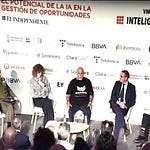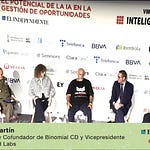When I first laid eyes on that modest 1980s poster emblazoned with HULK I barely realized I was standing at a threshold. Marketed as the “poor man’s knowledge engineer,” HULK offered microcomputers an accessible entry into knowledge engineering. It promised to help uncover latent knowledge and to let users build and test decision rules for prediction and classification. To my teenage self, its interactive appeal felt like magic and it ignited a passion that still guides my work today: exploring how machines can learn and collaborate with us to build smarter, more humane systems.
The initial spark
At fifteen, I spent hours writing BASIC programs. One day I spotted that HULK ad priced at just £25, complete with a glowing review praising its speed and interactivity. I reverse-engineered its parameters, teaching myself to assemble my own “knowledge base.” By eighteen, I had used those very techniques to build a microclimate prognosticator for my university capstone. That first spark taught me two essential truths: artificial intelligence grows from disciplined design, not magic, and its greatest strength emerges when human insight and machine reasoning work hand in hand.
Decades of exploration and evolution
Over the years, I delved into every chapter of AI’s unfolding story. In Brussels, I attended IBM’s Watson Center master course alongside pioneers like Marvin Minsky. In Silicon Valley, I contributed to Lisp-machine hardware projects for broadcasters and defense agencies. Later, I helped deploy one of the first commercial neural-network fraud-detection systems. Through every cycle, from rule-based engines to deep-learning breakthroughs, one conviction held firm: powerful algorithms alone aren’t enough; we must always design with people and purpose at the core.
Intelligent ecosystems: A Design-Driven approach
At Binomial, my advanced-tech design studio, we embrace a dual philosophy: weaving human and artificial intelligences into a single, coherent ecosystem. Drawing on insights from neuroscience and the theory of intelligence, we craft platforms that blend explainable AI, so users understand the “why” behind every recommendation, with silent AI that works autonomously in the background.
Our flagship projects range from high-performance cognitive assistants, where algorithmic training, user-experience design, and even biochemical cognitive enhancers intersect, to early-warning systems that continuously scan information streams and alert stakeholders when emerging scenarios demand action.
Early warning and decision-making
In a world of relentless uncertainty, geopolitical shifts, supply-chain shocks, rapid social debates, latency in decision-making can be disastrous. That’s why we’ve built tools that model “what-if” scenarios, detect subtle pattern shifts, and trigger real-time alerts when latent risks become imminent. By combining classical AI planning techniques with modern pattern-recognition models, our clients can pivot strategies long before circumstances overwhelm them.
Ethics and responsibility: The core of design
For me, ethics isn’t an afterthought—it’s the foundation of every project. Machines have no moral compass; we, as designers, must provide it. Before a single line of code is written, we define core human values, rigorously assess potential biases, and embed safeguards to ensure transparency and user sovereignty. Only then can AI fulfill its promise to serve rather than exploit.
Toward a tandem future
Today, as new generative models and multimodal agents command headlines, I return in spirit to that simple, initiatory HULK poster. My journey, from those first BASIC programs to leading global innovation, has taught me that true progress blossoms when we place humans at the center. May the next generation, upon discovering their own spark of curiosity, find in us allies and guides as they build a brighter, more transparent, and deeply human tomorrow.










